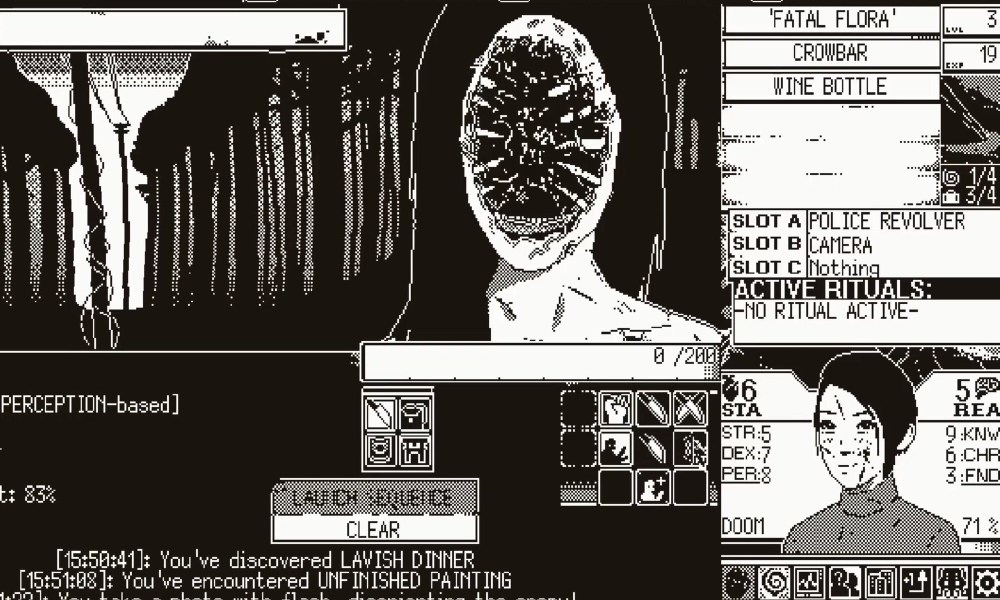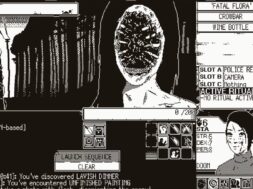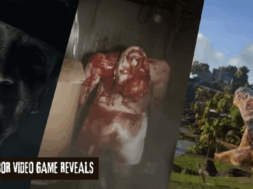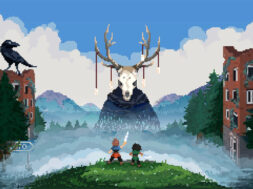
‘World of Horror’ Video Game Review – Text-Based Horror Experience Channels Lovecraft and Junji Ito
Alan Wake II is a sequel 13 years in the making. A lot of expectation comes with a wait of that caliber. Developer Remedy has attempted to make the long-awaited sequel numerous times over the past decade, from the spin-off Alan Wake’s American Nightmare to their Xbox exclusive game Quantum Break that began production as an Alan Wake sequel. Alan Wake II has clearly been on Remedy’s mind as much as it’s been on ours, and that labor of love and passion come through in the final product.
Alan Wake II is an absolute enigma of a game. At times it feels like a direct continuation of that story that ended 13 years ago, at times it feels like an absolute reboot that detaches itself for long enough to tell a standalone story, and still other times it feels like one of the most frightening horror games I’ve ever played. If that sounds a bit ambitious, that’s because it is. Alan Wake II is a labor of love that often feels like the greatest hits of Remedy’s games from the last 20+ years.
Alan Wake II appropriately picks up 13 years after the original 2010 game. This time the story follows a new main character: Saga Anderson. A no-nonsense FBI agent sent to investigate a series of gruesome murders that have been happening in the town of Bright Falls (the setting of the original Alan Wake). Here Saga and her partner Alex Casey (played by Remedy’s very own Sam Lake) will investigate crime scenes, collect evidence, and explore the town and surrounding lake.
Saga’s gameplay is very investigation based. Once players gather clues they’ll be able to travel to Saga’s “Mind Palace,” a manifestation of her Bright Falls lodge, to examine clues and piece together the case. What’s super impressive about this element of the game is the fact that players can access the Mind Palace at any time as if it were just another menu; but it’s a fully explorable and usable environment. I found myself looking forward to returning trips to the Mind Palace so that I could lay out all of my clues and piece their connections together, which are displayed in an old-fashioned pin board style with lines of thread connecting different people, places, and events.
Soon Saga’s story takes a turn for the worst and she’s thrown into a life or death situation that will put her combat skills to the test. Unlike the first Alan Wake which was more action-adventure based when it came to gameplay, this sequel leans heavy into the survival horror genre. Players will have to be mindful of all of their resources as they fight enemies that usually take the form of “shadow” monsters like the ones from the original game. Using Saga’s flashlight, you’ll have to focus light onto an enemy to weaken them and then unload her firearm into them. Being designed around resource management, these combat encounters are harrowing experiences that often only left me with a single bullet or battery charge. Gone are the days of ammo refill boxes and you’ll have to make the most of what you find out in the world. The combat is weighty and heavy with an excellent dodge mechanic. Fans of the modern Resident Evil games will have adjusted to the combat mechanics of Alan Wake II in no time.
Saga will also come across puzzles as she explores the world of Bright Falls. These can range from simple puzzles such as finding the combination to a lock or even something more involved such as finding dolls to place in correct positions at numerous sites. Alan Wake II’s puzzles are never obvious but instead leave the player to figure out clever ways to solve them. Admittedly there were a few I was stumped on, but only for a few minutes. As long as the player is paying attention to their surroundings, the puzzles shouldn’t be very time consuming.
As if this game wasn’t massive enough, there’s an entire half where you play as Alan Wake as he’s trapped in the Dark Place. For story reasons that I won’t spoil here, he’s been trapped in this realm since the end of the original game and his and Saga’s story tie together in very meaningful ways. Alan Wake II’s story is a complex puzzle that seems confusing from the outset but every piece fits together in a meaningful and fitting way. I cannot overstate how impressive it is to see such a complex game come out that trusts its audience with fully understanding the nuanced storytelling it presents.
Alan’s segments see him explore the Dark Place, a twisted version of New York City that he hopes to escape once and for all. Here he’ll encounter shadow monsters of his past but will also manifest changes in the world based on a story he’s writing. See, Alan has something similar to Saga’s Mind Palace; he has the Writer’s Room. A desolate room with a single desk and typewriter where he’s able to plot out what happens next. As he navigates the Dark Place, he’ll come across events that will give him inspiration called “Words of Power.” Using the Words of Power in his writer’s room, Alan is able to pair them up with environments he’s explored to further progress in the Dark Place. For example there was a subway car blocking my way but Alan had a moment of inspiration that allowed him to write about a fire in the car. Using these Words of Power with the subway car blocking his path, he wrote his story and the subway car caught fire and burned out, allowing him to travel through it to the other side.
Alan’s side of the narrative is where Remedy takes risks in their storytelling. The Dark Place is no stranger to odd beings and dangerous situations but Remedy pulls out all of the stops. There are live-action segments that are expertly integrated into the story rather than bookends like they were in Quantum Break. They feel like a vital component to the storytelling and help convey the feeling of uneasiness that Alan is experiencing throughout. There’s also a meta narrative that’s a huge callback to the Max Payne games that longtime fans will appreciate as never once did it feel pandering but instead like a celebration of everything Remedy has done up until this point.
Alan and Saga’s narratives interweave in ways that I thought not possible in gaming as a medium. It feels like binging an entire season of a TV show that takes the best parts of Twin Peaks, The X-Files, True Detective, and The Twilight Zone. On paper, absolutely none of it should work after a 13 year gap but Remedy pulls it off in spades. Another aspect that Alan Wake II improves on is tone. There was a dichotomy in the original game where the story it presented clearly wanted to be horror but the gameplay lent itself more to action and gunplay than anything else. I’ll be the first to admit that I was turned off by the original game’s execution and consider it to be one of my least favorite Remedy games, but this sequel and how it leans more into Survival Horror at times feels like the way the Alan Wake series was always meant to be.
The tech on display throughout the game is absolutely astounding. From seeing Alan’s environment change before his very eyes to Saga being able to transport from her Mind Palace and back in an instant without a single loading screen is impressive on so many levels. Alan Wake II is a game that asks for player participation and never holds your hand or insults your intelligence but instead offers one of the most rewarding experiences in next-gen gaming. I spent my time on the PS5 version of the game in performance mode and was constantly impressed with its performance and visuals. Remedy has stated on numerous occasions that they’ve taken a great amount of care when it comes to the console versions of the game and there’s no doubt in my mind that it is the case after my time with the final product.
Alan Wake II is an impressive game on nearly every single front. From its intuitive detective gameplay, to the environmental puzzles. From its interweaving narrative to its use of multimedia in storytelling. At many times during my time with Alan Wake II I was in disbelief at what I was playing, not only from a storytelling aspect but a technical aspect as well. Remedy could have easily delivered a safe sequel to a game from over 13 years ago, but instead they delivered something truly remarkable. Remedy proves with this game that they are an absolute force to be reckoned with. In a year loaded with fantastic survival horror experiences Alan Wake II is an absolute must play and easily one of the year’s best games. I can’t wait to experience it again.
Review code provided by the publisher.













